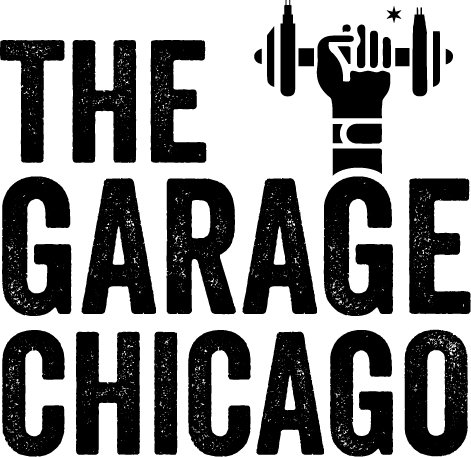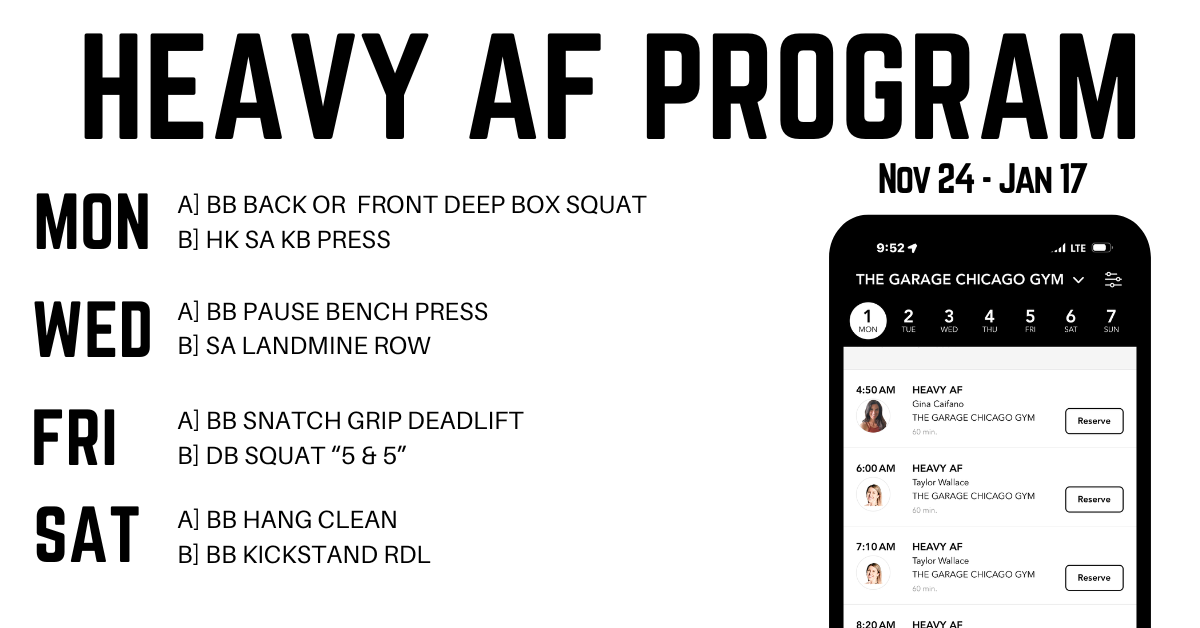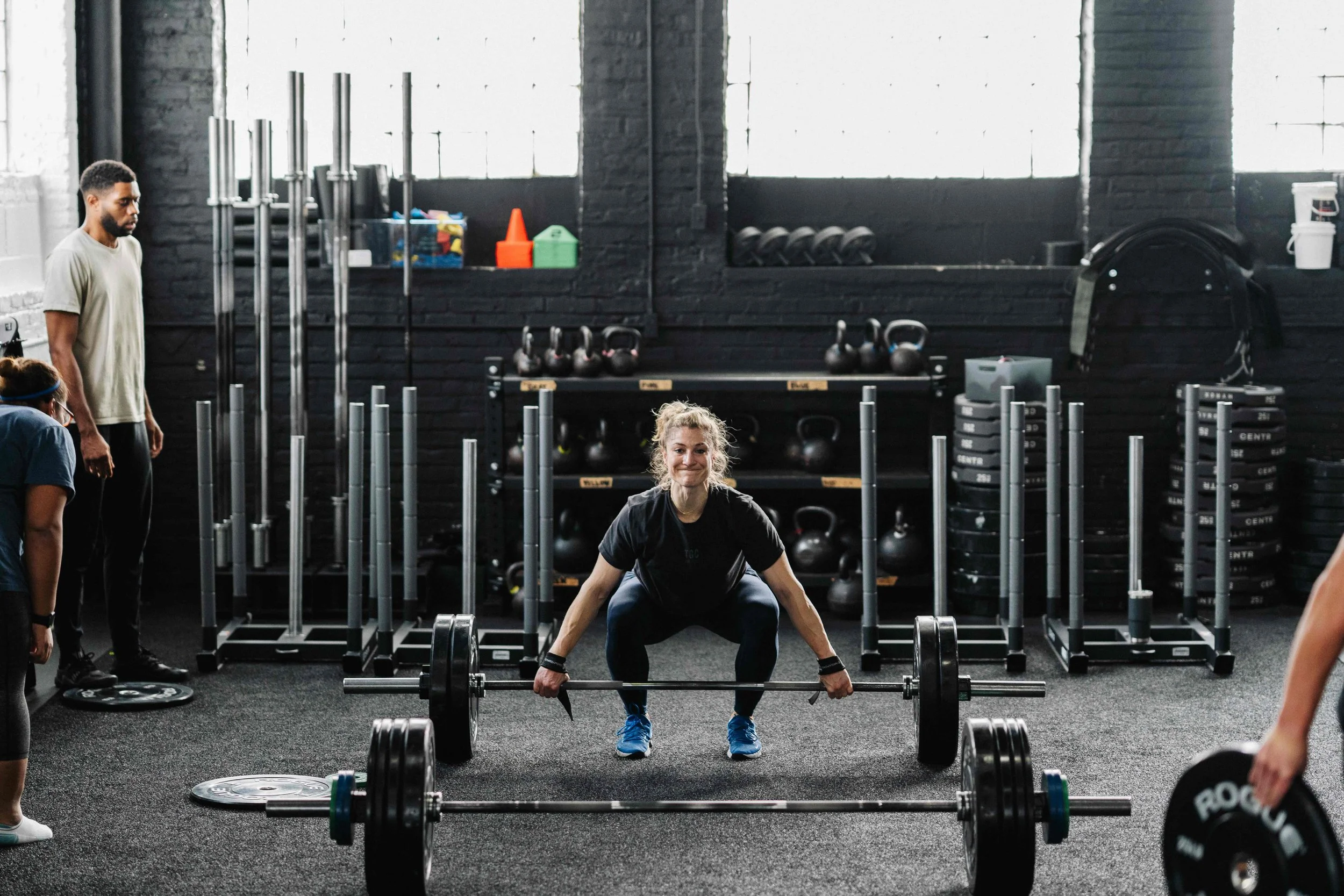HEAVY AF VOL 13
Hello, all my Strong Friends!
I’d like to start by welcoming anyone reading my programme breakdown for the first time, and to say a big thank you to the regulars for coming back again.
In this email, you can expect a clear rundown of what I’m aiming to achieve with the programme, an overview of the movements and our training split, and perhaps a laugh or two depending on my mood.
I’ll also finish with a section on areas we can improve and a bit of extra shiz that I think you might find interesting.
THE PLAN
Firstly, some notable ideas over the next 8 weeks:
THE NEW REP SCHEME… AGAIN…
We’re running it back; for our main lifts, we’re doing the same again. We’ll build up to a heavy set as usual to the prescribed rep count, followed by multiple drop sets using different percentages and a self-selected rep count.
This structure gives coaches loads of chances to teach effort awareness, (basically us standing there and yelling “do another one!”) it offers flexible rep ranges for newer lifters, and helps everyone autoregulate their intensity based on how they actually feel on the day.
Here’s what Week 1 looks like:
WORKING SET 1: 5 REPS @ RPE 8–9
WORKING SETS 2 & 3: 1–2 RIR @ 85% *aim for 8-12 reps
WORKING SET 4: 1–2 RIR @ 70% *aim for 10-15 reps
So, your Working Set 1 is based on RPE (Rate of Perceived Exertion). Your sets 2 through 4 then use a percentage of that top set, aiming for 1–2 RIR (Reps in Reserve) or you could also say AMQRAP (As Many Quality Reps as Possible). Simple enough.
If you’re thinking, “ASH that isn’t simple at all, I didn’t like it!” well… tough.. We’re running it back because the more experience you have the better you will be at it. The better you are, the more you’ll like it!
The whole point of this training style is, firstly, to give you something new to chew on — something to actually think about instead of just going through the motions. But more importantly, it teaches autoregulation. Not every week is a banger, and this approach gives you more freedom than ever to pull back when you’re tired, and absolutely send it on the days you’re feeling great.
Cool? Cool.
Ok lets talk training splits:
MONDAY
Primary movements on Monday will be a Deep Box Squat in your main block and a Half Kneeling Overhead Press as your secondary.
DEEP BOX SQUAT
As normal, we will choose a front or back rack position.
Then, we’ll be sitting on a low box that is ideally positioned at or below parallel. The outcomes we are looking to achieve here are better depth and squat technique.
The box gives us a consistent target so we know we’re hitting the right depth every rep.
It allows for more strength and power – sitting all the way down on the box takes away the stretch reflex, which means our muscles have to work harder to drive the weight back up. *Make sure you come to a complete stop at the bottom—no touch-and-go reps ya cheaters.
Finally, it improves control and stability – That pause at the bottom is great for balance and body awareness under load.
We want to try and keep the bar over our mid-foot in the bottom position of the squat. We don’t want to lean back and use momentum to help us get up and down. Stay balanced and engaged.
We’ll use the 12” Rogue boxes to get everyone just below parallel, and taller athletes can add foam pads as needed.
HALF KNEELING SA KB PRESS
Kneeling on the ground you’ll press a kettlebell overhead with the opposite hand to the knee that is forward (contralateral).
Using a kettlebell in this position encourages more shoulder flexion at the top of the press (more ROM). The offset weight naturally brings the forearm more vertical and keeps the wrist neutral, which helps reinforce solid pressing mechanics.
We should aim for full range of motion—elbow fully locked out with the kettlebell stacked “behind the ear.”
Additionally, the half-kneeling setup will make it easier for many of you to keep a neutral spine while pressing overhead.
When overhead mobility is limited, while in a barbell press people often compensate by excessively arching their backs into an extended position. This is not a strong or stable position to press from, and could put you at a greater risk of injury.
The SA KB press allows you to practice the upward motion with a natural spine and will help to reduce the tendency to extend when using a barbell. You’re welcome.
Lift heavy and focus on maintaining tension through the core.
Additional movements on Mondays will be box jumps, heavy rows, ab exercises and upper body pumps.
WEDNESDAY
Chest and Back Babyyyyyyyy. Pause Bench Press and SA Landmine Row are your main Wednesday lifts.
PAUSE BENCH PRESS
Reasons for the pause:
Pausing on the chest takes all the momentum out of the lift, so we’re building strength from a dead stop. Similar to the box squat on Mondays, this will take away the stretch reflex that occurs in a traditional press, increasing muscle demand.
We need to make contact with the chest and hold a true pause before pressing back up. We don’t want to rest the bar on the torso, releasing tension in the arms at the bottom. Again, like the squat, maintain tension!
Additionally, pause bench press is great for technique - holding the correct bar position reinforces a consistent touch point, proper positioning, and solid overall mechanics. It also mirrors powerlifting meet standards, which builds confidence for anyone concerned with what “counts” in a competition.
Plus, that extra time under tension means more muscle recruitment through the chest, shoulders, and triceps—so it’s a win all around. Strength and muscle gains. I don’t know about chu, but I’m tryin’ to get thick this winter.
SA LANDMINE ROW
The landmine row is a pretty high tier upper body movement. Mainly because it's super stable and highly loadable!
The landmine allows us to load the movement with plates and therefore encourages heavier efforts than most dumbbell or kettlebell variations. Wrist straps are always encouraged!
Compared to movements like bent over barbell rows and pendlay rows, the landmine row is a little more stable, which could allow some people to push the target muscle groups closer to failure without compensating and using momentum.
The landmine row will be performed from a lunge stance, where you guys will be resting the elbow of your free hand on your knee. This is where all the stability comes from. Push down into your knee, creating counter force which will help your lift.
Additional movements on Wednesdays will be a hinge exercise for the hammies and glutes, some bends, and finally some high volume lower body work.
FRIDAY
Primary movements on Fridays will be the snatch grip deadlift and a “5 and 5” Dumbbell Squat.
SNATCH GRIP DEADLIFT
This is a new movement for us! The snatch-grip deadlift is a great exercise for building the entire posterior chain.
We will use a narrow stance with a very wide grip. When you first grab the bar, widen your grip until your elbows can lock out straight while the bar sits comfortably in your hip crease. Then use the barbell’s knurling marks to keep that grip consistent.
The wider grip means we are closer to the floor and the pull is longer. This increased range of motion translates to more strength off the floor; it increases knee flexion, forcing more demand from the quads in the initial phase of the lift.
The wider hand position also forces strong upper-back engagement, helping build scapular strength and better posture in a regular deadlift.
I’ll encourage you guys to use wrist straps or a hook grip!
We’ll perform this movement for four weeks giving you guys a new training stimulus and should help your deadlift overall.
DB SQUAT "5 and 5"
Thank Coach Eric for this one. The 5 and 5 refers to the tempo through the up and down phases of the squat.
5 seconds down, 5 seconds up.
This is going to be brutal. Week 1 is 6 reps lol, that's a full minute of squatting!! Do this with a partner. Count for each other and call each other out! I think that will be a great way of ensuring accountability in the exercise week to week.
Using a slow tempo increases time under tension, which keeps the muscles working longer and helps build both hypertrophy and endurance. That controlled pace also builds technique - every rep has to be intentional, which improves coordination, stability, and overall body awareness.
Athletes can use either one dumbbell or two, depending on what allows them to load the movement with the most weight. GO HEAVY and sit to depth!
Additional movements on Friday will be pull ups and chin ups, some twisties, and sprints.
SATURDAY
Olympic lifting is back on the menu for Saturdays! Cleans are back!! The Barbell Hang Clean is your primary movement, along with a kickstand RDL as the heavy lift on the other side.
BB HANG CLEAN
In the standard Barbell Squat Clean there are three “pulls” in the movement: the first pull from the floor bringing the barbell to the thighs, the second pull from the thighs to the hips, and the third pull to pull the body under the bar and into the rack position - the hardest part to learn for a lot of people is the second pull, thigh to hip. The timing and coordination is tricky!
The BB Hang Clean involves starting from a tall position rather than the ground, lowering the bar, in this instance just past the knee, before changing direction to perform the second and third pull of the motion.
Removing the first pull creates a shorter range of motion allowing you to focus on keeping the bar close in the second pull. It also means there’s less time to accelerate the bar, and forces quicker movement under it. That means sharper turnover, better timing, and faster positioning in the catch.
If you are new to olympic weightlifting - this would be an excellent place to start!
KICKSTAND RDL
The kickstand RDL is our secondary Saturday lift. It's a great way to strengthen the posterior chain, sharpen hinge mechanics, and address left-to-right imbalances - It's a single leg RDL but with more stability making it far more accessible and loadable!
Additionally, using a barbell opens the door for more loading than we are typically able to use with dumbbells or kettlebells.
Additional movements on Saturdays will be a loaded jump of sorts, an upper body burner and some grip enhancements, rounding out your four day programme.
EXTRA STUFF
Ok, here’s a couple questions/topics that I think ya’ll could benefit from exploring…
“WHAT COUNTS AS A WORKING SET?”
Some of ya’ll need to work harder on the B Block. Just sayin’.
You guys are really invested in our primary movements, which I love!!! Yet when it comes to our accessory work some people are coasting along.
For those of you with a lot of experience, this is a big difference maker!!
When you first start out you get newbie gains. Most of that is technique development and confidence which allows you to slap some serious weight on the bar quickly.
However, if you’re experienced and you've been around a while, and maybe someone who is feeling a little stuck and not seeing movement in your numbers any more, some extra attention in your accessory movements might be what you’re missing.
The rows, RDLs, split squats, and tricep sets aren’t just filler—they’re the enhancements that actually fix weak links and drive the main lifts up.
Picking a comfy weight and calling it a day five reps before anything gets remotely challenging does not count as a working set!!!
Truth is, if you’re not pushing those accessories properly, getting near failure and treating them with a bit of grit, you’re leaving half your progress on the table.
My OGs the big lifts won’t move without the extra stuff: you can’t build a strong house if you’re half-arsing the bricks and mortar.
Let’s start treating our accessories with a little more intensity!! Sick…
“HOW MUCH PROTEIN SHOULD I BE EATING?”
This is a topic I like to circle back to, as it’s so important and deserves reiterating.
If your goal is to be yoked, ripped, strong or athletic… pretty much anything pertaining to fitness training - the answer to this question is… A LOT.
If you’re training regularly, protein’s one of those things people massively overthink, but the basic idea is pretty simple: you just need enough to recover and actually build something from all the hard work you’re putting in.
Most active people do well aiming for roughly 0.8-1.2 grams of protein per lb of bodyweight per day—it’s a broad range on purpose, because it depends on how hard you’re training, how big you are, and what the rest of your diet looks like.
It doesn’t need to be a military operation either; you can spread it out over meals, hit a decent serving at breakfast, lunch, and dinner, and maybe a snack or shake if you’re short. The main thing is consistency: get enough in over the day, and your body will actually have the tools to repair, grow, and keep you performing well.
If you’re not aware of roughly how much protein you need and how much protein you're getting, aligning those things will be huge in achieving your goals.
OK team that’s all I got, love ya’ll
Let’s get it!
Coach Ashley Stephen





